Traditional medicine has made use of basil for many centuries thanks to its antibacterial, antioxidant, and anti-inflammatory properties. Basil is a wonderfully versatile herb, and its leaves can be used in soups, salads, and sauces. You can choose different types of basil filled with an explosion of flavors, sweet, spicy, and earthy, and use it fresh or dried.
Now let’s dive in and learn basil’s mysteries!
Basil in Traditional Medicine: Uncovering this Ancient Herb’s Healing Properties
Basil can aid in many ways to improve health, including promoting liver function, lowering blood pressure, reducing swelling and inflammation, and more.
It can improve the liver’s detoxification processes. In addition, the herb extract can aid the liver in producing health-promoting enzymes and boost its antioxidant defenses, making it a helpful tool for people with trouble maintaining optimal health.
The high amount of eugenol in sweet basil can aid in lowering high blood pressure by blocking calcium channels in the body. As a result, it stops calcium from entering the heart and artery cells by blocking calcium influx. Blocking calcium influx lets blood vessels relax and thins the blood, which helps lower blood pressure.
Basil is a great way to reduce swelling and inflammation. The eugenol in basil reduces inflammation by blocking the enzymes that cause swelling and pain. In addition, holy basil can lower the risk of diseases like diabetes, high cholesterol, and arthritis linked to inflammation.
Green Thumbs Up: A Beginner’s Guide to Growing Basil
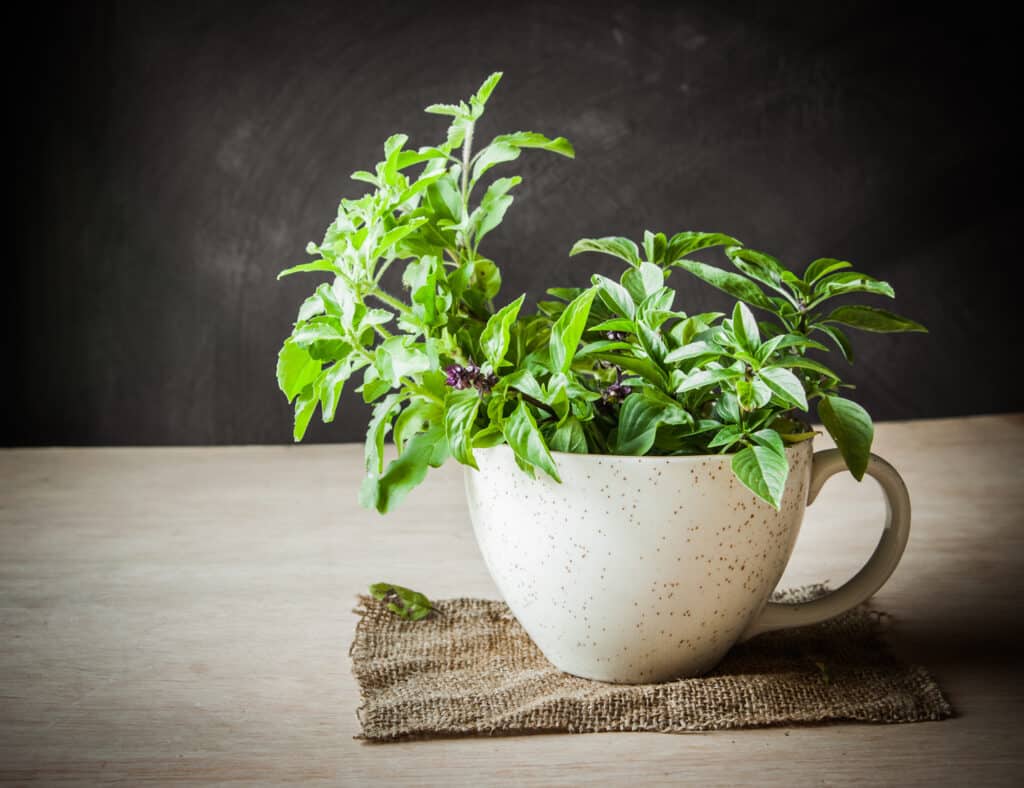
©A Studios/Shutterstock.com
Planting, tending, and harvesting basil leaves is a rewarding experience. It can enhance sauces and pizzas, salads, and many more dishes. Although sweet basil prevails over other basil, a few different kinds offer intriguing flavors and are fun to grow.
Basil grows best in settings that receive six to eight hours of direct sunlight daily, although it can also thrive in partial shade. The soil should be moist, nutrient-rich, and well-draining. For optimum drainage, plant the herb in pots or raised beds. Plant basil six weeks before the final spring frost and wait until the soil has warmed to at least 50 degrees Fahrenheit before planting outside.
Raising basil is straightforward – keep the soil moist and apply mulch around the plants to control weeds and retain moisture in a hot climate. Fertilize sparingly throughout the growing season. Harvest your basil whenever cold weather is near because freezing temperatures will harm your plants.
Picking your basil allows your plants to continue developing. If temperatures reach 80 degrees, your plants will begin to branch out. Start harvesting your plants when they reach 6-8 inches tall. Early morning will provide you with the most excellent leaves to harvest. Twelve basil plants can generate four to six cups of leaves per week if picked regularly. Keep your plants in the freezer to minimize flavor loss.
From Sweet to Spicy: 12 Different Types of Basil
1. Dark Opal Basil
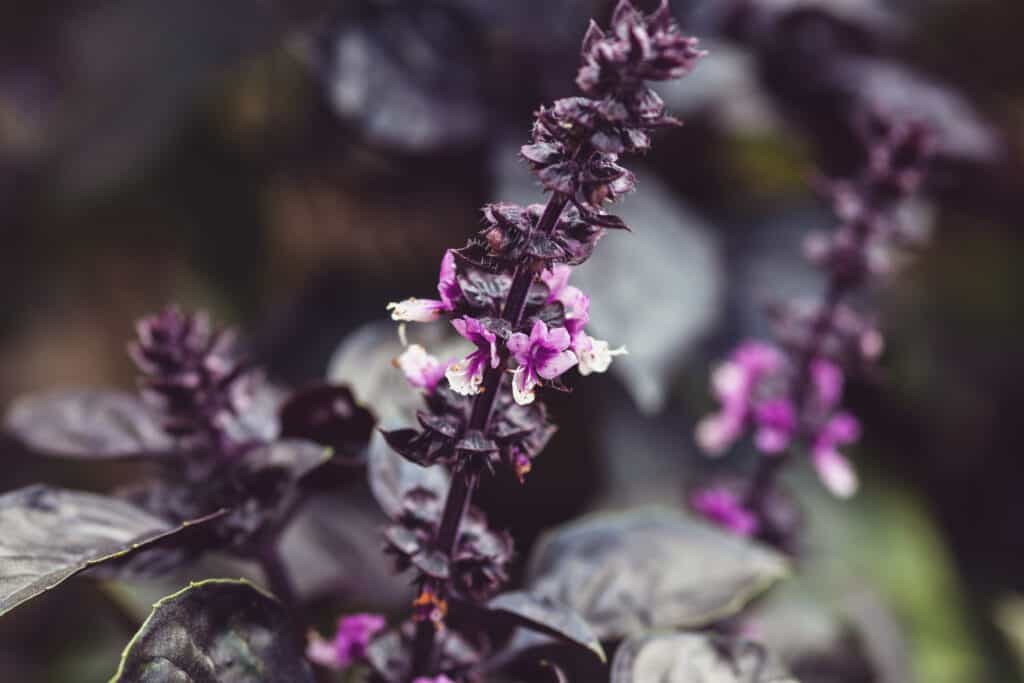
©iStock.com/Nadya So
Their vivid purple leaves distinguish basil plants of the dark opal kind. Not only are the leaves of this plant aesthetically beautiful, but they also have a flavor frequently utilized in various dishes, especially in Mediterranean and Italian cuisine.
2. Lemon Basil
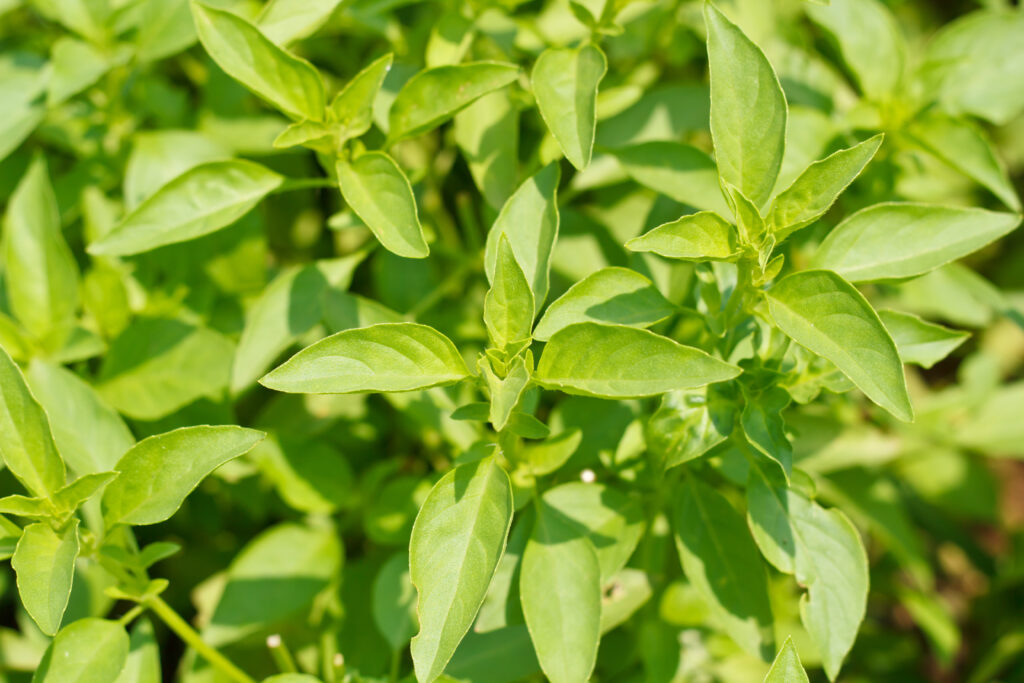
©TairA/Shutterstock.com
In northeast Africa and south Asia, lemon basil is a perennial herb, often called hoary basil. This variety contains vitamins A, K, and C, making it a nutrient-rich variety that strengthens bones, boosts the immune system, and improves eye health.
3. Lime Basil
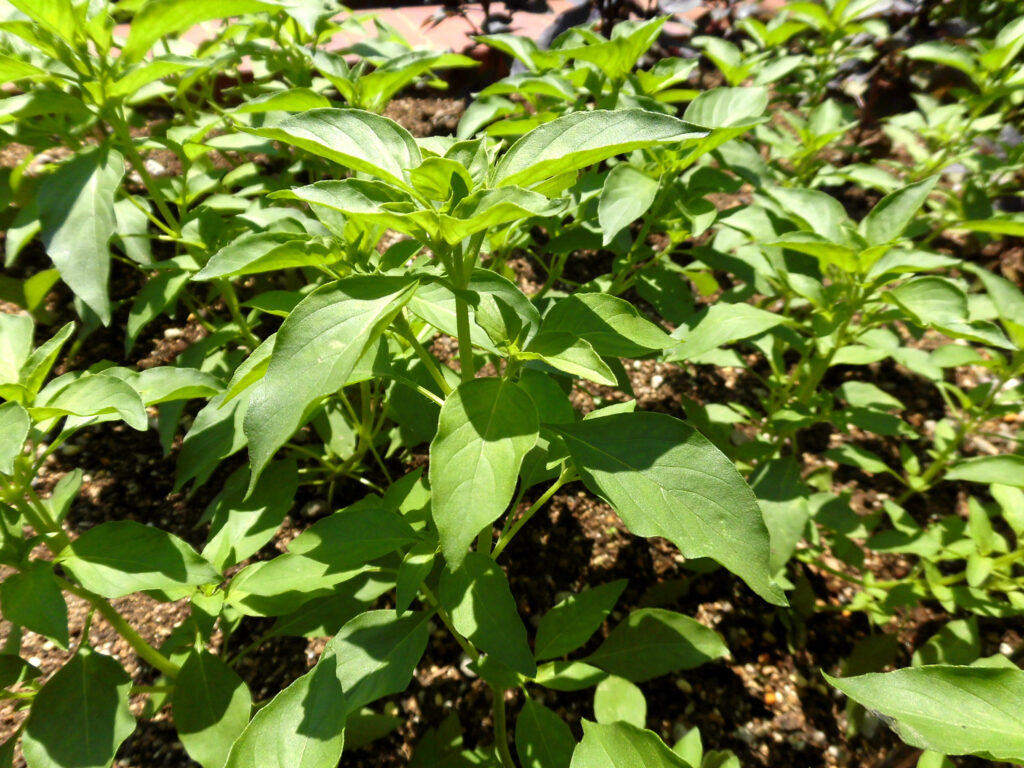
©pilialoha/Shutterstock.com
Lime basil, a near relative of the more popular lemon basil, has a zesty flavor and a pleasant, lemony scent. It will complement Thai cuisine, poultry, fish, sauces, fruit salads, and other fresh, summery foods. Moreover, it will elevate a delicious iced tea.
4. Christmas Basil
Christmas basil is another basil cultivar and a beautiful hybrid of Thai and Genoese basil. It’s a stunning plant with lustrous, vivid green foliage, dark purple stems, and lighter purple blossoms with a robust and herbal aroma that conjures images of winter getaways. In addition, Christmas basil has a salty flavor making it a wonderful accent to sauces, soups, and meat dishes.
5. Greek Basil
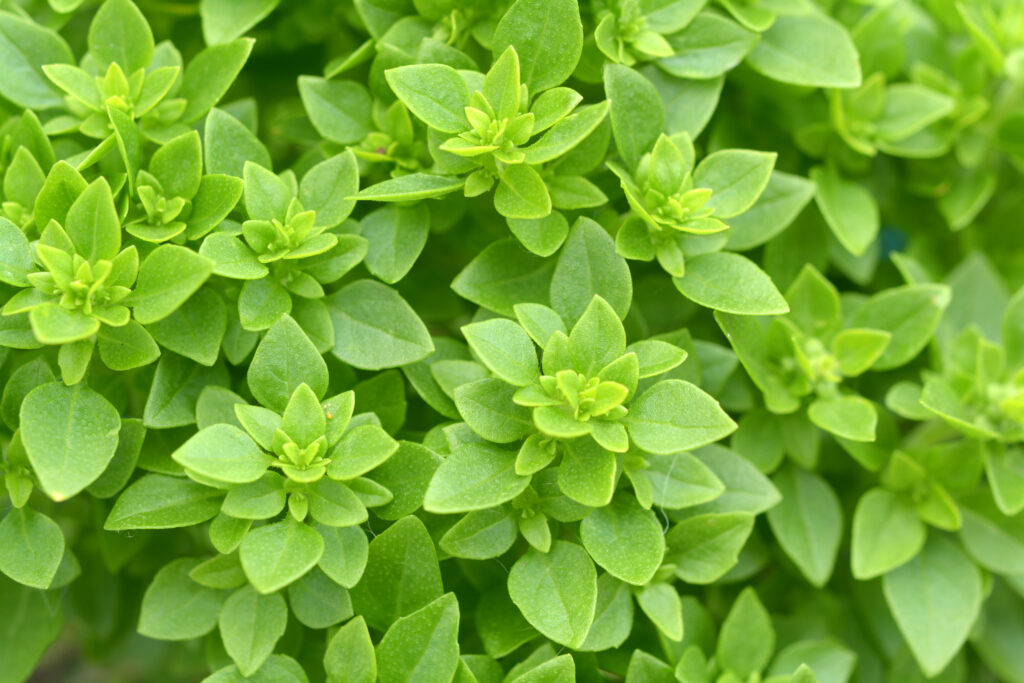
©AN NGUYEN/Shutterstock.com
The Greek basil plant is one of the most miniaturized varieties of basil. It only reaches a height of 8 inches, and the leaves of the corporate plants have a pale green color and a pointed appearance. They form tight, globular clusters as they mature. Basil is a fantastic herb garden addition and grows well in containers. Due to the size of its leaves, it is an excellent complement to a salad and may also serve as an original garnish.
6. Cinnamon Basil

©Nadya So/Shutterstock.com
Also called Mexican spice basil, cinnamon basil has a mildly spicy flavor and hints of cinnamon. This basil variety is often in Asian cooking, and the fresh leaves taste great in a fruit salad or as a garnish in the summer. It has bright green leaves with thin purple lines running through them. The purple stems hold light purple or pink flowers, adding a pop of color to your herb garden.
7. Globe Basil
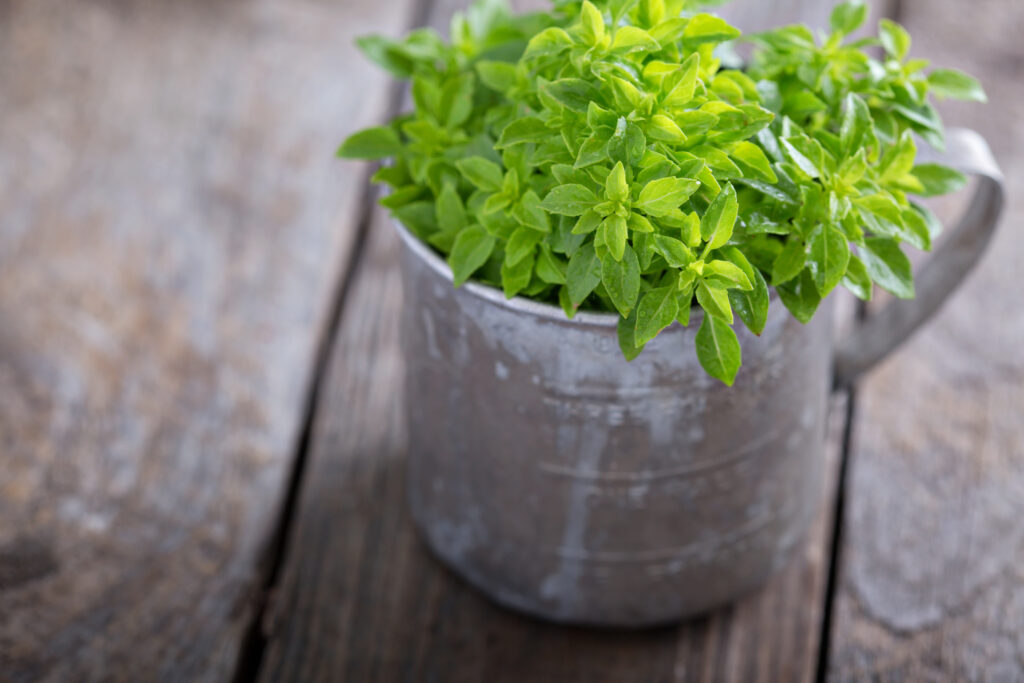
©Elena Veselova/Shutterstock.com
Globe basil is also known as spicy bush basil and boxwood basil. It is a dwarf sweet basil thought to have originated in India and Asia. This plant develops in the shape of a globe because its tiny leaves grow in clusters. Globe basil is ideal for garnishes and raw uses in salads and other cuisines.
8. African Blue Basil

©EQRoy/Shutterstock.com
African blue basil is a hybrid of dark opal basil and camphor basil. It may be cultivated in warm climates and can reach 4 feet. Originating from camphor basil, it has a mild camphor aroma with traces of clove and mint. It has a peppery and minty, with a complex flavor profile. African blue basil is appealing since its blossoms are a delicate pastel blue or purple shade. If you want to attract helpful pollinators, such as bees, to your garden, planting African blue basil is a good idea.
9. Holy Basil
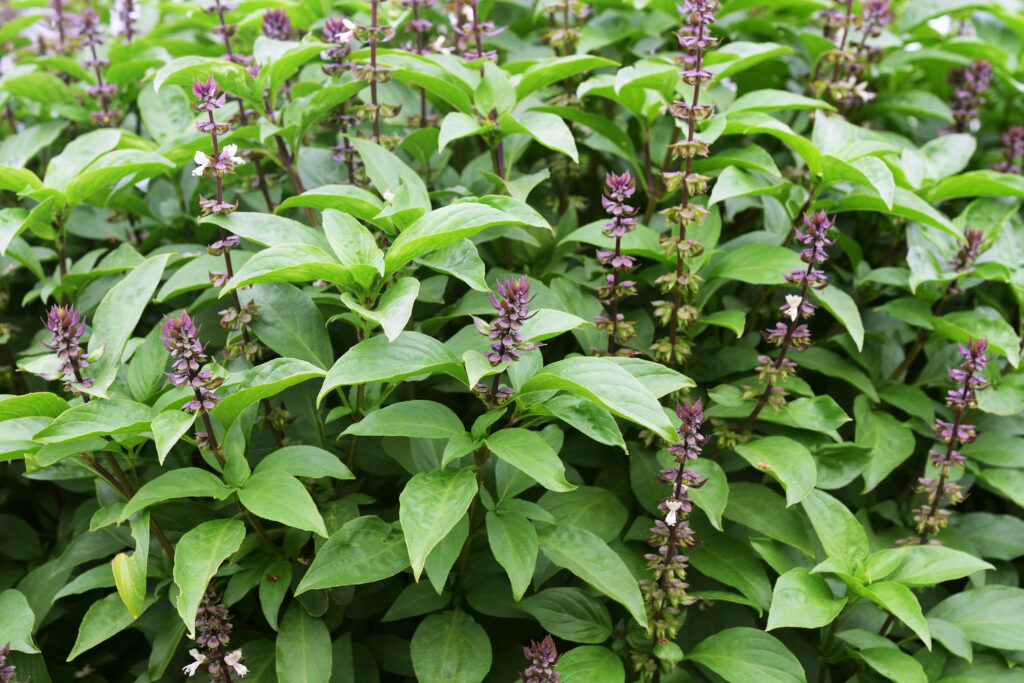
©muthugpd/Shutterstock.com
Also known as tulsi, holy basil resembles other basils in appearance but is distinguished by its unique flavors and qualities. The pale, purple stems and small purple flowers resemble Thai basil, but holy basil leaves are wavy and slightly wrinkled, whereas Thai basil leaves are flat and smooth. Holy basil is used in Indian cuisines due to its spicy flavor and is a popular herbal tea available at most supermarkets and health food stores.
10. Genovese Basil
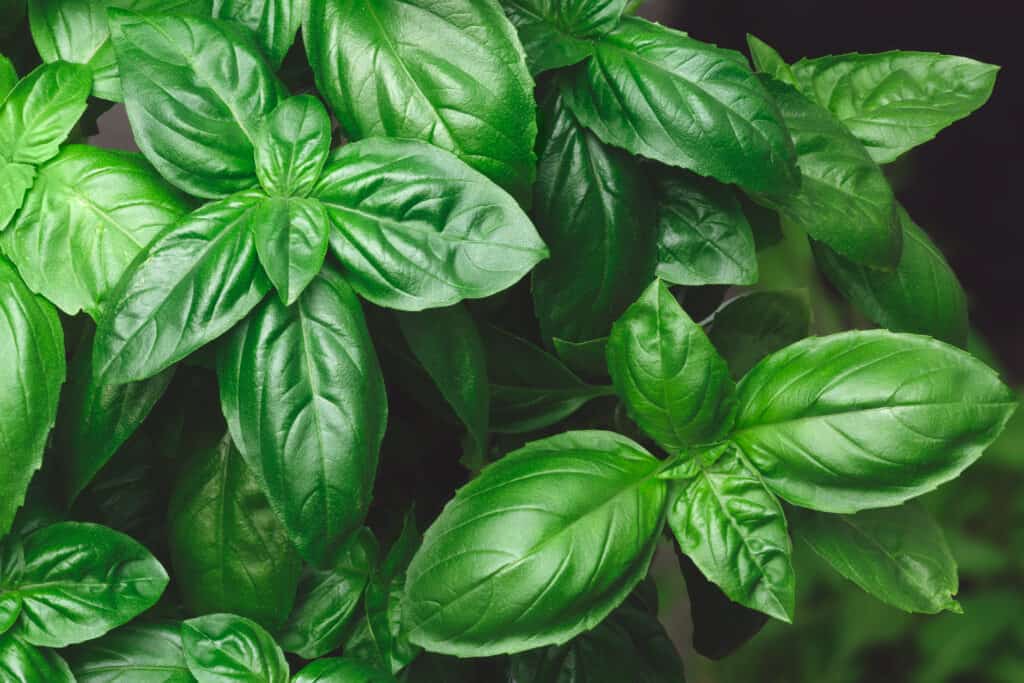
©Hortimages/Shutterstock.com
Genovese basil is the most extensively used and farmed basil for culinary purposes, often known as Italian basil. It features mint and clove flavors and a complex spicy flavor. Many gardeners and cooks know Genovese basil’s huge, glossy, rounded leaves. It’s one of the best herbs for pesto and may also be eaten fresh in salads.
11. Sweet Basil

©Nadya So/Shutterstock.com
Genovese basil and sweet basil are similar. Although the form of sweet basil leaves is less rounded and more pointed, the color of sweet basil leaves is often lighter than Genovese basil. In addition, there is a hint of licorice taste in sweet basil.
12. Osmin Purple Basil
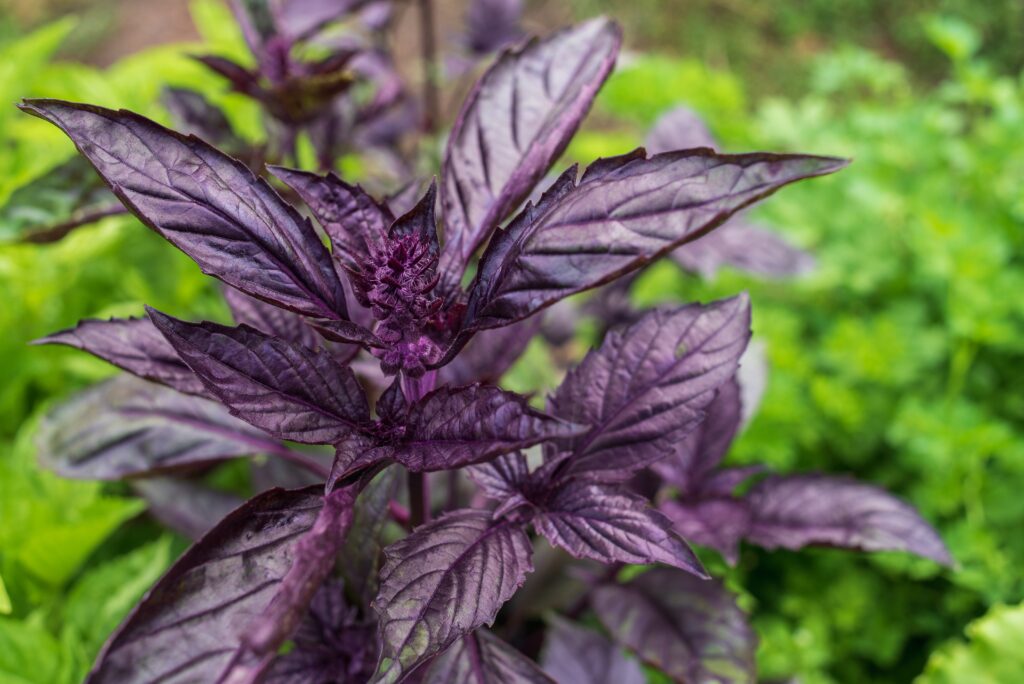
©Natalia Garidueva/Shutterstock.com
Osmin purple basil is one of the most popular types of purple basil. However, it is one of the darkest strands of basil due to its strikingly dark purple hue with blue and black undertones. Osmin purple basil has a clove-like, peppery flavor, making it delicious in fresh salads and garnish.
Final Thoughts
Basil is more than simply a culinary herb. It is an ancient remedy with numerous healing potentials, including enhancing liver function, regulating blood pressure, and reducing inflammation and swelling. Basil is simple to grow and harvest and can be grown indoors and outdoors. It’s certainly not surprising that basil is so widely utilized, given the variety of basil types and the variety of purposes it can serve.
The post 12 Types of Basil appeared first on AZ Animals.
from Animal News, Facts, Rankings, and More! - AZ Animals https://ift.tt/KVQhe9A